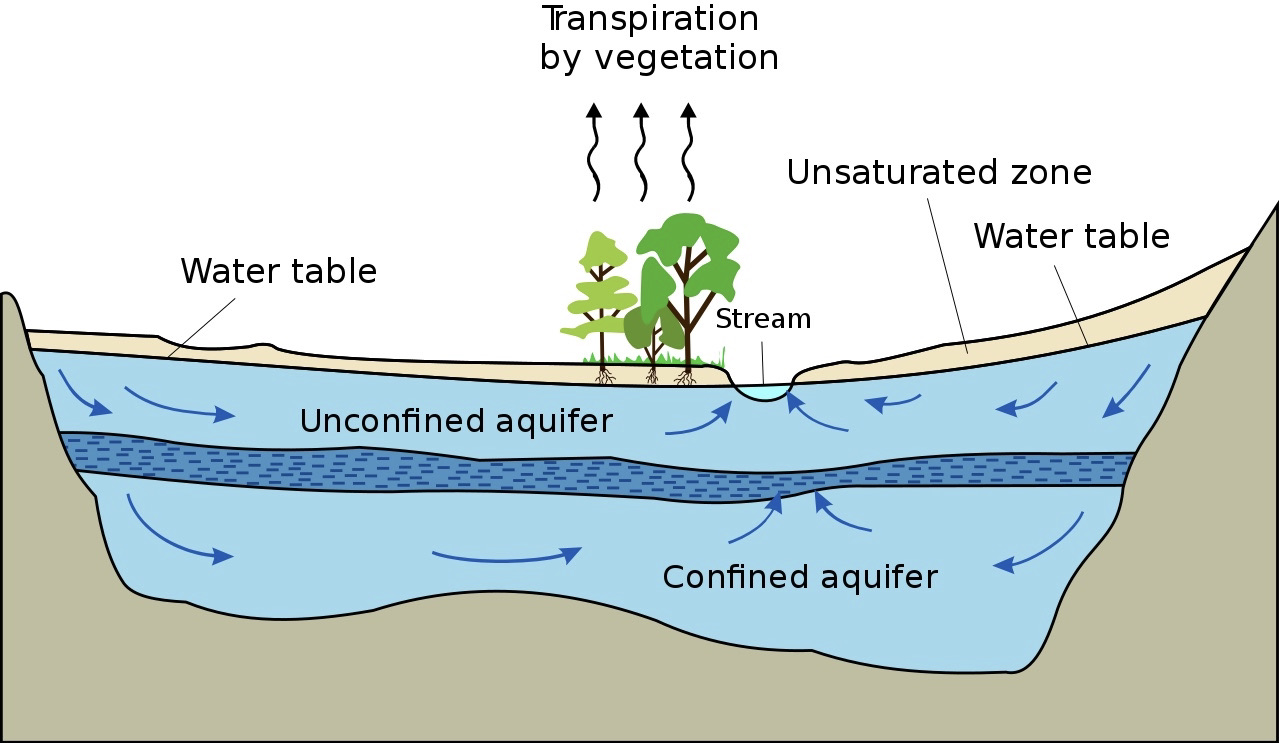Paper: Divergent effects of climate change on future groundwater availability in key mid-latitude aquifers
Authors: Wen-Ying Wu, Min-Hui Lo, Yoshihide Wada, James S. Famiglietti, John T. Reager, Pat J.-F. Yeh, Agnès Ducharne, and Zong-Liang Yang
The ground I’m standing on feels solid, but it’s really full of porous rocks. The holes in these rocks are all different sizes, and water can flow through and between those with larger holes. Together, bodies of rocks that are saturated with water form aquifers. As groundwater supplies more than a third of the water humans use, groundwater and the aquifers that contain it are vital. They are especially vital in mid-latitude arid and semi-arid regions without enough surface water. In their recent research, Wen-Ying Wu and their collaborators studied the future of aquifers in such regions and what factors control it.
Wu et al. modelled how the amount of water stored in aquifers will change during the 21st century using a “business-as-usual” scenario, where humans continue to emit heaps of carbon dioxide into the atmosphere. They chose seven aquifers that lost a lot of water from 2003 to 2014 in mid-latitude arid and semi-arid regions. The researchers used a coupled climate model, which allows for feedback between model components. In this case, that meant the model included the effects of each component (land, atmosphere, ocean, and ice) on each other component. The model calculated the amount of water in aquifers as a function of water table depth, groundwater inputs and outputs (we’ll go into these soon), and interactions with the rocks above.
In addition to studying how the amount of water in aquifers will change, Wu et al. studied what will cause that change. Before we delve into what they found, it’s important to understand the two key causes of aquifer change: pumping and climate change. Pumping extracts water from aquifers for us to use. As such, it directly decreases the amount of water in aquifers. The effects of climate change are more complex. Climate change changes precipitation trends, decreases snowmelt (as less snow falls with warmer temperatures), and increases evapotranspiration (evaporation from the land’s surface and from plants), which together tend to decrease the amount of water in aquifers.
Using the model, Wu et al. compared the effects of pumping and climate change and found that the aquifers will likely continue to lose water during the 21st century as humans pump more water than is naturally replenished. However, they discovered that sustainable use of aquifers in the Central Valley, Northwestern India, and the North China Plain is possible with less pumping.
Another major finding of this work focused on what components of climate change will cause aquifer change. Normally, precipitation changes are thought of as having the most significant effects on aquifers. The researchers showed that snowmelt and evapotranspiration also have significant effects. As a result, they found notable differences in how the amount of water stored in aquifers is likely to change depending on the surrounding areas’ snowmelt and evapotranspiration.
As humans, our actions are changing nearly every feature of earth’s geology. This research shows us that the water flowing beneath our feet is no exception.
The Fate of Aquifers, and What Controls It by Vishva Nalamalapu is licensed under a Creative Commons Attribution-ShareAlike 4.0 International License.

